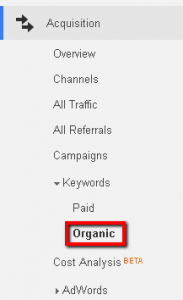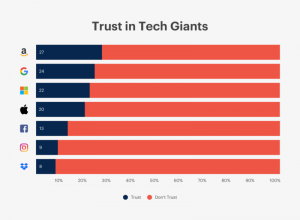The proliferation of social media — some may say, obsession — has resulted in the opening of social media marketing purse strings. Wide open, in fact.
More marketing dollars are being thrown at social media than ever before. From fear of being left behind. The promise of customer growth. The hope of untapped sales.
Here’s proof:
- BIA/Kelsey Survey found that small businesses spent an average of 21.4% of their budget on social during 2014.
- Social Media Examiner reports 83% of marketers indicate social media is important for their business.
The Results of Tracking $ 1 Billion in Transactions: Look Away, CFOs, Look Away
In 2014, Bounce Exchange analyzed more than $ 1 billion of e-commerce revenue (billion with a “b”) across our client base.
These are some of the most innovative online marketers in the world.
Our research found that organic traffic from these companies’ social media channels accounted for only 1.2 percent of our clients’ overall revenue.
The conversion rate? A whopping 1.3 percent. That’s sarcasm. That’s also an astounding 51 percent lower than our clients’ overall average.
Ugh.
This begs the question: Are you measuring your social media ROI correctly? Or at all? Are you crossing your fingers and hoping the conversions will come.
If so, you’re not alone. 53% of social media marketers do not measure its success.
We did.
The bad news: the conversions from organic social media efforts aren’t coming.
Better news: social media still plays a vital role in building your brand. It’s not the end-all, sure-fire conversion machine marketers assumed it could or would be. But still, it’s important.
Measuring Social Media ROI with New, Possibly Painful Expectations
In the good ol’ days, the core ROI measurement of social media marketing was the accruement of followers and fans. You know, like a middle school beauty pageant.
This “organic” brand reach is now irrelevant, of course, Mark Zuckerberg confirmed its gory death in January when he announced a significant reduction in promoted brand posts in news feeds.
Even before this announcement, though, only .07% of top brands’ Facebook fans interacted with each of their posts. And those were probably the brand agency’s social media team members.
Basically, social media marketers are taking on the cost of becoming publishers, but without any ad revenue behind it.
And marketers are catching on. Specifically regarding the lack of accurate ROI measurement. Adobe found that 52% of marketers cite difficulties in accurately measuring ROI as their biggest source of frustration in social marketing.
Don’t stop posting to Twitter, Facebook, Instagram or whatever newfangled social media channel your prospects are visiting. However, you should set new expectations. If your social media efforts are not supporting conversions, then do not treat them as conversion channels. They are engagement channels. Nothing more, nothing less. Funneling more dollars into Facebook will not improve sales. It may build brand awareness and create loyal followers, and that’s important.
A Better Way to Improve Conversion, Without Flushing Dollars Down the Drain
There are many other ways to improve engagement with your targeted audience compared to social media.
Here is one conversion-producing machine that may surprise you: email.
Weird, right?
Email is so boring. So “old hat.” So stale. But damn if it doesn’t convert like nobody’s business.
When Bounce Exchange looked at email revenue across $ 1B of transactions, we found that it was higher than paid search, affiliate marketing programs banner ads, and of course, social media.
Cha-ching!
Companies should be taking advantage of their hard-earned email lists. These lists were created because someone opted in to learn more about the brand’s products or to be kept up-to-date on new announcements.
They cared.
Emails go directly to the desired targets inbox and prospects either open it because they are interested or they don’t because they aren’t. At least you know the message was delivered to them. You know, as opposed to hoping and praying someone will click on a link on Twitter.
Using email as a platform for engagement allows a company to pick and choose what content is shown to what list they’ve created. Read that again: you have complete control over who is going to see your message. If people are engaged, they tend to forward emails to their peers about a sale or new product.
Or, more importantly, they click on your link and are taken to a very specific landing page that continues the message to an eventual sales conversion.
One Last Punch to the Social Media Gut. Honest, It’s the Last One.
Marketers needs to be aware of another potential pitfall of social media: where it belongs on your website. And where it does not.
Real estate is key.
E-commerce brands, for example, can be a bit greedy. Instead of limited social media widgets to “like” or “share” buttons, they bombard the user with a button for every social media channel. However, users are easily distracted.
Companies should emphasize the current deals, or other products that are available. Save the “like” or “share” for your blog.
If a user is shopping, let them click the “purchase” or “buy” button only. There’s a reason $ 4 trillion worth of merchandise was left sitting in online shopping carts in 2014.
Your goal is to complete the sales transaction, not to distract the user.
Final Thoughts: Know Your Audience, Create Realistic Goals & Test, Test, Test
Everything starts with knowing your audience. (Seriously, read their diaries if you can.)
Where are they finding you? Which pages have they visited on your site? The more that you analyze your visitors’ digital body language the more you’ll be able to market to them better.
Also, set social media goals. Legitimate goals.
What do you want your prospects to do? Subscribe to a newsletter? Purchase a product? Ask for a quote? Download a kick-butt whitepaper?
Whatever it is, set it and start tracking. Then analyze it and make some hard (or exciting) decisions about your marketing mix.
Social media should be a part of your marketing mix. Of course. But as you’ve seen, it’s not the panacea to converting online sales that we all imagined it would be by now.
Maybe one day.
Author’s Note: Bounce Exchange loves social media. We are on social media, hourly. (Probably as you read this.) But we specialize in real-time data. And data tells us that organic social media does not yet convert. Paid media? Yes, if it’s targeted Facebook ads (for e-commerce) and LinkedIn ads (for B2B). Twitter, heck no. Also, if you’re a publisher, this article does not pertain to you. Nothing personal.
(292)






